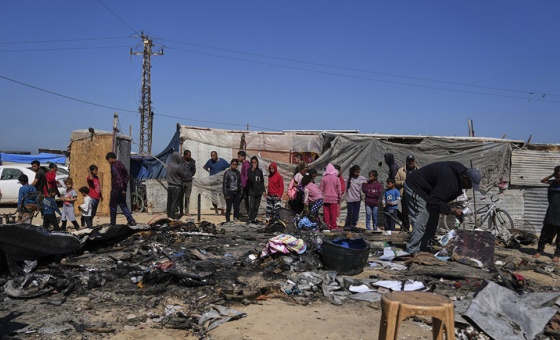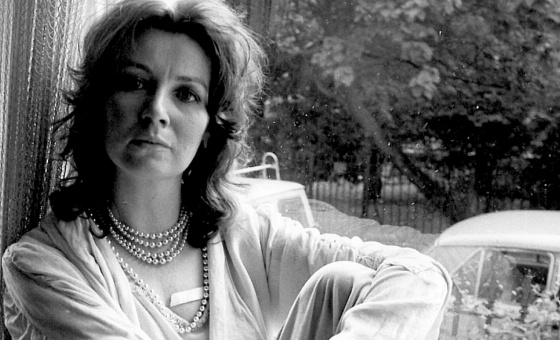This is the last article you can read this month
You can read more article this month
You can read more articles this month
Sorry your limit is up for this month
Reset on:
Please help support the Morning Star by subscribing here
How are you telling such an important story?
NG: There are two in the cast of our play United We Stand so it can’t be a regular courtroom drama. We use different methods and different styles. We use song and occasionally puppetry but mainly we use the Brechtian style that Joan Littlewood might have used in Oh! What a Lovely War.
There are no rules. It’s almost like a comedy double-act crossed with drama crossed with storytelling crossed with music as well. There are plenty of songs about the case written at the time. The story has found itself into folk tradition in quite a big way. The play finishes at the point at which they are sentenced and they go to prison.
Why focus on this topic now?
NG: Our first production was The Ragged Trousered Philanthropists, so we were dealing with a classic book there.
We got in touch with Ricky Tomlinson because we knew the book had had quite a massive impact on his life when he read it in prison. Our last show was We Will Be Free — the Toldpuddle Martyrs’ story — which was quite a feat with two actors.
That was a play about injustice and the attempt by the then Establishment to crush trade unionism. This play brings the debate inherent in these plays completely up to date and puts it in a modern setting.
And because the campaign has been so active we approached them and asked if they’d be prepared for us to do our next play about the story. This case is extraordinary.
What progress is the campaign making?
ET: We lodged an application to the Criminal Cases Review Commission (CCRC) in 2012 and since that time we have put in two further tranches of evidence which we feel are convincing and we are confident it will be referred back to the High Court. The difference with our case compared to other cases with the CCRC is that we cite abuse of executive process.
We believe there was no substance in the charges in the first instance and that the whole 12-week trial of six pickets was a total put-up job.
How come these pickets, out of 270,000 building workers, managed to stand trial on conspiracy to intimidate? Building workers were a dispersed force and very little unified because of the diverse and the transitory nature of their trades.
What brought them together in 1972 were the horrendous conditions on the sites. Between 1970-73 there were 242,000 registered industrial injuries but the highest fine paid by a contractor was £300 for two deaths.
What exactly happened to the
pickets ?
ET: On that day — September 6, 1972 — nobody was cautioned. No-one’s name was taken. There were no police casualties. There was no fracas with the police and even more importantly the police did not complain about the pickets and the men were not arrested until five months after the end of the strike.
In the meantime the National Federation of Building Trades Employers wrote a letter to all its regional secretaries asking for instances of police intimidation during the recent strike. I’ve got the dodgy dossier. There were 85 instances but when you compare what went on in north Wales compared to the other industrial areas it doesn’t even come up to your ankles.
That dossier was sent to the home secretary Robert Carr. He in turn set up a police investigation to investigate what happened in north Wales. That report was sent to the attorney general Peter Rawlinson. We believe he did not give any agreement whatsoever for those charges to be brought and that is where government interference came in.
They did not have sixpence worth of evidence to prosecute those people. We believe the decisions that were taken to bring charges against the Shrewsbury 24 pickets were taken at Cabinet level.
What effect did this experience have on the pickets?
ET: Twenty-four innocent people were charged and all they did was take part — as they had every right to do — in a strike.
Because of that they were demonised and they are still demonised today. A lot of the pickets have never met each other since. They came from small places all over north Wales and small communities have long memories.
It is not just those people who were being ostracised. It was their sons, their daughters and their grandchildren. A lot of them never worked again. A lot could not get a job back in their trade. They had to go the length and breadth of the country for work because they were blacklisted.
Their families suffered greatly because of this and they are still suffering today. All they want, without exception, is to clear their name. They were criminalised. This should be referred back to the Court of Appeal urgently and their convictions quashed.
You have to take into account these people’s ages. The oldest is 87 and the youngest is 66. I personally would be looking for an apology for them directly from government.
How do you hope audiences will respond to the play?
NG: I hope they will take away similar feelings they did from our previous two plays — particularly the deep sense of injustice. And that they will also take away the sense of human suffering. Their lives had been turned upside down. They’ve sacrificed their freedoms, their reputations and their opportunities — they could never work again.
They did it because of the purely selfless thing of seeking the better conditions for themselves and their fellow workers. That is what it was about. The government made an example of them and it is similar to Tolpuddle in that way. This was disgraceful behaviour that we still see. It is the Establishment all looking after each other.
Were there any special challenges to creating this production?
NG: It was very important to get the facts right but it is such a difficult road to tread. With the Tolpuddle Martyrs, everyone has gone, they are not here and you can play a bit with the characterisation. But a lot of these people are still alive and their families are aware of it.
You can tell this story without upsetting too many people, or at least those we don’t want to upset. It is about doing it right by the people involved and the experience so far is pretty good I think.
How does this show fit in with the kind of work you aim to do?
NG: Our work is about telling the stories of the past which have relevance today and to point up the modern relevance. So our work is innately political in that sense.
It has been described as folk theatre at its very best and we have the top folk musician John Kirkpatrick, who’s worked in the past with Richard Thompson, Steeleye Span and Roy Bailey, involved.
It was Ewan MacColl who said that folk music is the music of the masses and it is inherently political. That is a tradition we aim to keep alive. It’s a style that is in danger of becoming extinct. Our experience is that people like it a lot and miss it. We get really good audiences who say this is “proper theatre.” We try and hit home, make a mark and make our point but have some fun while we are doing it.
United We Stand previews at the Leighton Buzzard Theatre on September 19 and then tours nationally until November 29. Details: townsendproductions.org.uk





